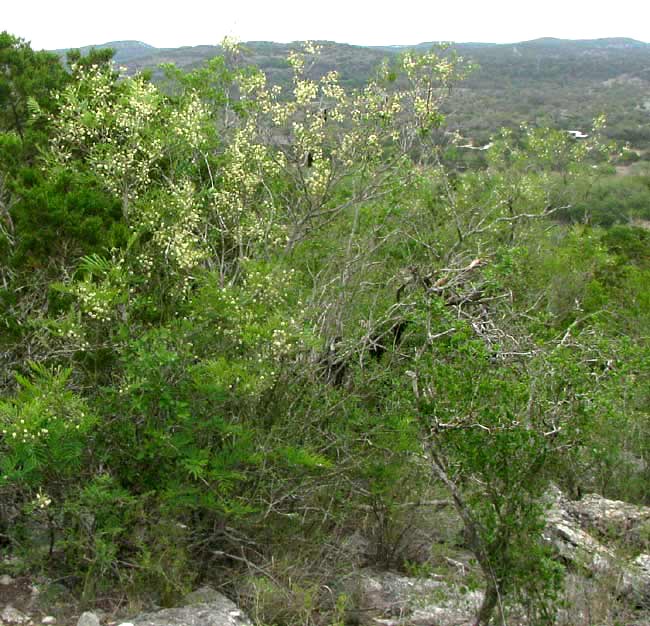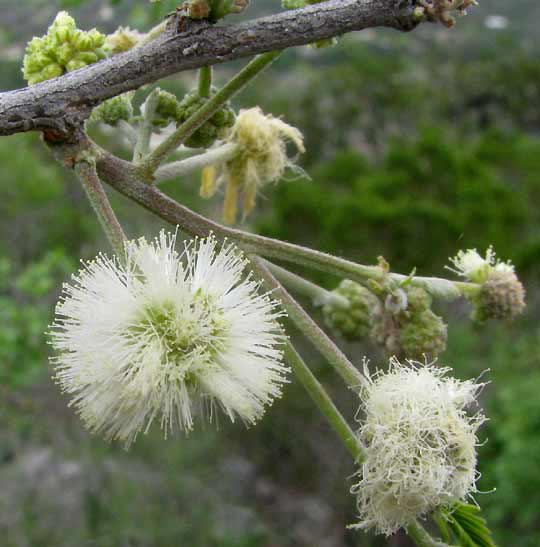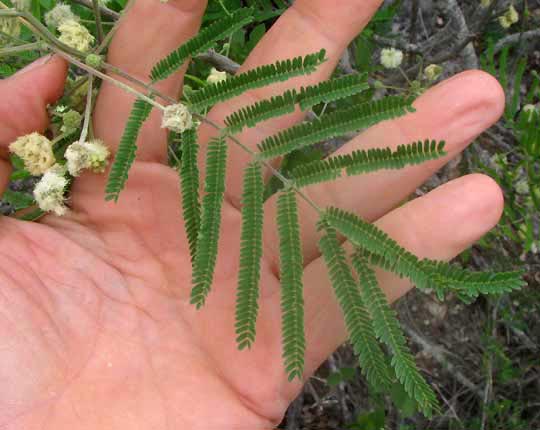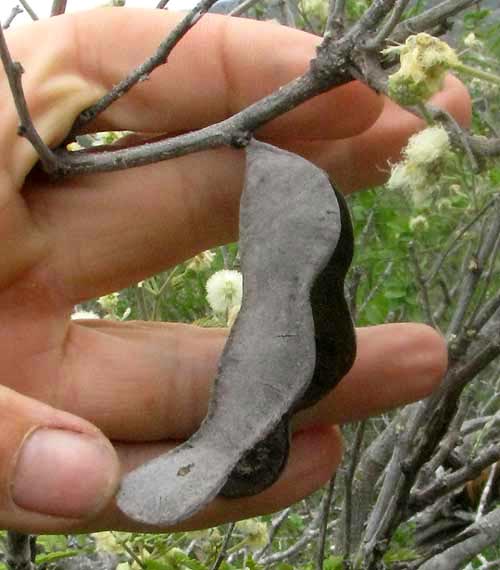Excerpts from Jim Conrad's
Naturalist Newsletter

from the the April 28, 2013 Newsletter issued from the Frio Canyon Nature Education Center in northern Uvalde County, southwestern Texas, on the southern border of the Edwards Plateau; elevation ~1750m (~5750 ft); N29.62°, W99.86°; USA
GUAJILLO ACACIA
Rooted in rock fissures and between slabs of limestone forming ledges atop hills bordering the Dry Frio Valley nowadays a much branched, wiry, bushy tree species about ten feet tall
(3m) is covered with white, marble-sized, puffball-like flowering heads that showed up even in this week's heavy overcast, as shown above. A close-up of some flowering heads on long, stout peduncles appear below:

The "fuzz" covering the balls consists of stamens with tiny, cream-colored, pollen producing anthers atop stiff, slender white filaments, as shown below:

In that picture you see that many more than ten stamens issue from each flower's greenish, five-sepaled calyx. Leaves on the tree are twice pinnate with numerous tiny leaflets, giving a ferny appearance, as shown below:

A few split-open fruit pods, or legumes, left over from last season remained on our tree, their beans long fallen out, as shown below:
 .
.
In our area when you have a tree with such powder-puff-like flower heads, plus each individual flower produces more than ten stamens, the leaves are twice pinnate, and the fruits are legumes, the best bet is that you have an acacia, which is what this little tree is. It goes by several names, including Guajillo, Berlandier Acacia, Thornless Catclaw, Mimosa Catclaw, Round-flowered Catclaw, Huajilla and Matoral. It's SENEGALIA BERLANDIERI, and its various Spanish names reflect that it mainly occupies hillsides and slopes in arid northeastern Mexico, entering the US only here in southwestern Texas.
Among its English names, "Thornless Catclaw" is a good one because it recognizes that most acacias are thorny, but this one isn't. Two or three low, weak spines did turn up on one stem, but mostly the branches were spineless. One reason Guajillo can get by without investing energy in producing spines is that its foliage contains alkaloids making the tree toxic for browsing livestock. Even goats don't like the herbage.
Just south of us, as soon as you leave the Edwards Plateau's hilly area and the vegetation becomes scrubbier, Senegalia berlandieri becomes much more common than here, constituting one of the main trees in much of southern and western Texas's vast "bushlands."
Guajillo's flowers are fragrant and many kinds of pollinators buzzed around them during my visit. Some Texans say that the heavy, light-colored honey produced frp, Guajillo flowers is the best tasting of all Texas honeys.